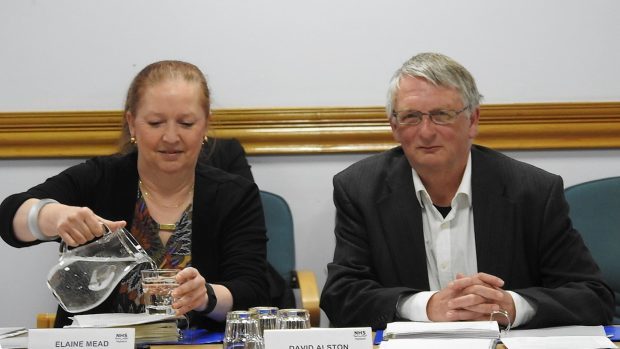NORTH health chiefs have unveiled plans to slash millions more from their spending – raising fears the cuts will put patient safety will be put at risk.
NHS Highland bosses insist they can trim their budget without sacrificing services.
But they were warned last night that after nearly a decade of belt-tightening even maintaining the status quo could be impossible.
The bulk of the health board’s £800million revenue package for 2016-17 was approved yesterday.
NHS Highland must bridge a £4.1million gap in its books – despite already identifying potential savings of more than £24.7million for the coming financial year.
The board’s finance director, Nick Kenton, said the financial pressure facing the region’s health service was “a daunting challenge and the biggest in the history of NHS Highland”.
He said that in 2012-13, savings of £23.8million had to be found to balance the books.
And he confirmed that a late balancing act – in the final month of the financial year – meant a £900,000 projected overspend in 2015-16 would be overcome.
Mr Kenton said there would be “no let-up in the financial challenge” because an increase in Scottish Government grant would be “outweighed” by the latest demands on the service.
They include higher drug and national insurance costs, changes in the state pension arrangements and the impact of the “living wage” cost on the care sector.
The target for 2016-17 is “pretty much exactly double what we have achieved in 2015-16”, he said.
The board defines its options as “housekeeping, corporate service savings, central savings and efficiencies arising from quality improvements”.
This year’s savings are likely to include a reduction in a long-standing dependence on locums, which cost £16million in 2015-16 and £10million the previous year, using more cost-effective drugs and more phone contact and video-conferencing between patients and GPs.
The board’s vice-chairwoman, Sarah Wedgwood, was a sole dissenting voice among more than 20 colleagues gathered at Assynt House in Inverness.
She called for a more forensic assessment of the potential risks of the proposals and said: “I feel very strongly that this is a draft and not a budget at the moment I can sign off.”
Board chief executive Elaine Mead disagreed.
“The setting of the budget is clear about the resources that are available to us,” she said.
“Where I do agree with you is around the development of the options in savings, which we’re bringing back to the next committee meeting.”
Incoming chairman David Alston, the ex-Liberal Democrat group leader on Highland Council who as budget leader steered the authority through the early years of the current recession, told the Press and Journal: “I’m confident we’ll find the extra £4million.
“The challenge is across Scotland. There are boards with much bigger challenges than we have. It won’t be about cutting back on services. It’s about how we deliver services better.”
But Mary Scanlon, outgoing north MSP and former Tory health spokeswoman, said: “If this was the first year that NHS Highland was facing cuts I would say they could still manage that and improve services.
“However, they’ve now been cutting for nine years because they’ve not received their full allocation of funding necessary for providing NHS services in a remote, rural area.
“I don’t think it’s possible to have millions more cuts without a serious impact on patient care.”
Mr Kenton pledged: “We’re not just focussed on the maths. As a board, we’re focussed on the quality approach.
“We believe there are things we can do which will reduce cost and actually be good for the patients.”
The aim is to recruit staff to avoid locum hire by making NHS Highland “the employer of choice”.
Mr Kenton added: “We have evidence of people wanting to come and work here because of the quality approach.”
Highland’s funding has increased this year by £27.5million (5%) including £15.3 million for social care as part of the integration of health and social care.
Announcing the figure in February, Health Secretary Shona Robison said it demonstrated “the Scottish Government’s commitment to continuing investment in improving care”.
